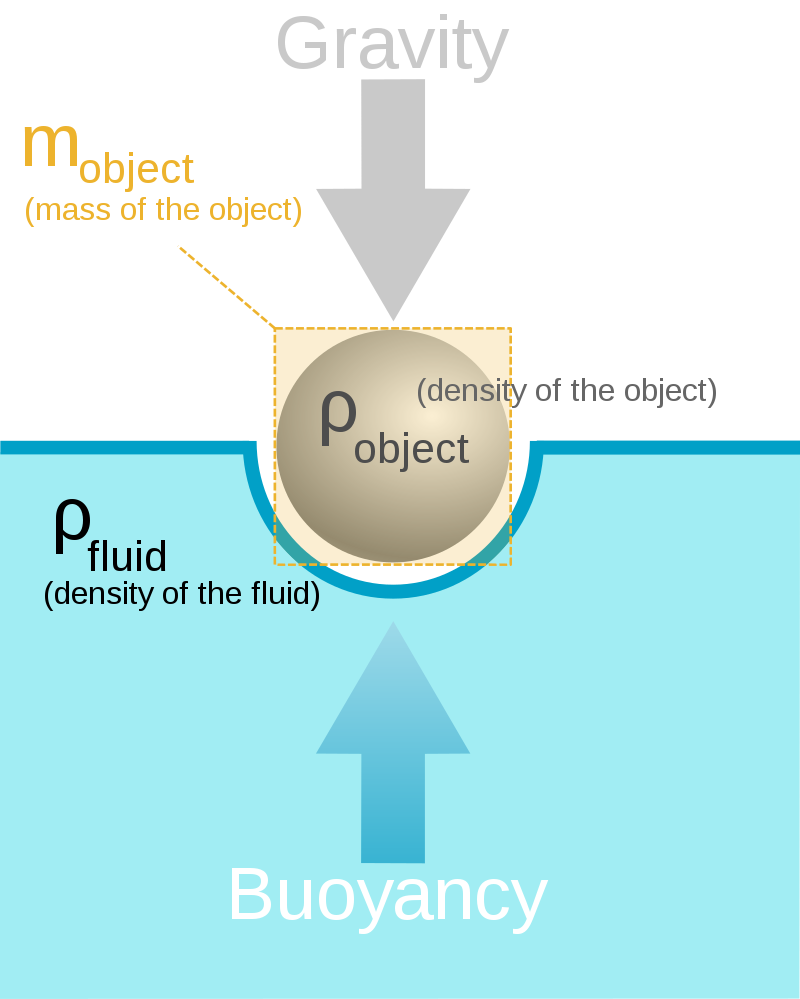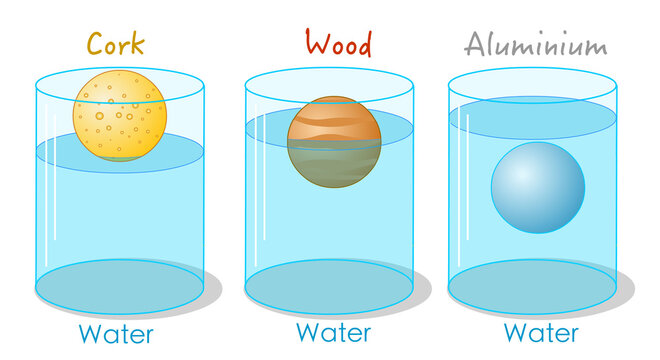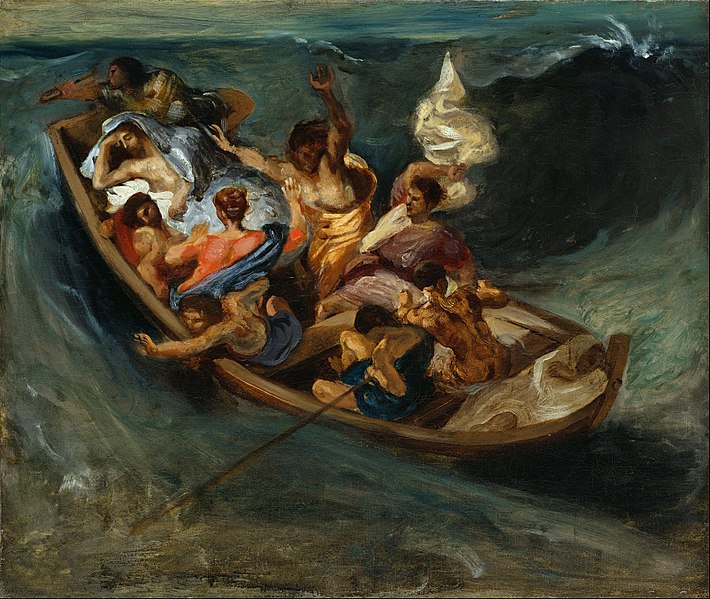Materials
The chairs of the classroom.
Brooms and mops any kind of sticks about a meter long.
A painting with a boat at the sea
(We propose the Eugene Delacroix painting Christ Asleep during the Tempest–1853).
A big glass pot/container with water.
A simple small ball.
Stage 1- The painting as the first step.
The teacher shows a painting on the wall without any other information about it and invites the students to look at it carefully and describe it.
We propose the « or Christ on the Sea of Galilee» by the French painter Eugene Delacroix.
The teacher asks specific questions in order to give stimulus to the students to speak about the following :
- What does the painting represent?
- Where are the persons ?
- What is happening? do we see calm waters or a tempest?
- What could be the feelings of the persons in the paintings? Etc
- But, there is one person that is not afraid of the tempest, what is he doing?
- Can you guess who is he?
- The aesthetic matters of the painting (colors, the light and where it is coming from, the contrast etc).
The teacher gives some basic information about the painter and the painting.
The Painter
Ferdinand Victor Eugène Delacroix 26 April 1798 – 13 August 1863) was a French Romantic artist regarded from the outset of his career as the leader of the French Romantic school. Delacroix took for his inspiration the art of the painters of the Venetian Renaissance, with an attendant emphasis on color and movement. Dramatic and romantic content characterized the central themes of his maturity. Delacroix was also inspired by Lord Byron, and themes related to the Greek and French revolution. However, according to Baudelaire, “Delacroix was passionately in love with passion, but coldly determined to express passion as clearly as possible.” He is one of the last old Masters of painting. As a painter he uses optical effects of color profoundly shaped the work of the Impressionists. Delacroix illustrated various works of William Shakespeare, the Scottish author Walter Scott and the German author Johann Wolfgang von Goethe.
The painting
Delacroix painted at least six versions of this New Testament lesson in faith: when awakened by his terrified disciples, Christ scolded them for their lack of trust in Providence. In the earlier works, the seascape is more prominent; in the later ones, as here, Christ’s bark occupies a more significant place.
Stage 2 : The action
The teacher encourages the students :
To take a chair and put it in the middle of the empty space of the classroom. They take one stick as a paddle (can be a Broom or mop or any kind of sticks about a meter long or anything else)
- The teacher inspires the students to pretend that they are in a boat in the middle of a lake or sea and paddling to go across. The water is calm and peaceful.
- Suddenly a tempest breaks out. Wind and huge waves appear. The students pretend that they are in danger. They are afraid that they will be lost in the water. They experience feelings of agony and make efforts to survive.
The theatricality and drama desired can develop and evolve if relationships are established between students and the various roles they will be encouraged to play.
(i.e. One student saves the boat and the life of another student beside him. Connect 2 boats/chairs. They make bigger space to step as 2 chairs connect to each other etc and finally reach the seaside.
Stage 3 : The technology of floating
1st question : how heavy is a boat with nine persons on it. Lets guess.
Nine persons by 70 kg each is about 420 kg and the boat about 400 kg are almost a tone all together.
2nd question : how such a heavy thing-a vessel- about 850 kg, does not go straight in the bottom of the sea/lake?
An experiment.
The teacher uses the glass pot with water and 2 balls (a wooden one and a metal one)
The wooden floats.
The metal sinks and goes to the bottom.
Why?

Stage 4: The Buoyancy
The teacher explains the phenomenon of Buoyancy and all the forces that works for it.Buoyancy or up-thrust, is an upward force exerted by a fluid that opposes the weight of a partially or fully immersed object. In a column of fluid, pressure increases with depth as a result of the weight of the overlying fluid. Thus the pressure at the bottom of a column of fluid is greater than at the top of the column. Similarly, the pressure at the bottom of an object submerged in a fluid is greater than at the top of the object. The pressure difference results in a net upward force on the object.
For this reason, an object whose average density is greater than that of the fluid in which it is submerged tends to sink. If the object is less dense than the liquid, the force can keep the object afloat.
The M = mass of the object
the R = Density of the object
The P = Density of the fluid
The relationship between them in order to have the phenomenon of Buoyancy and the final results What is the M and R in Wooden ball and what is the same in metal.



